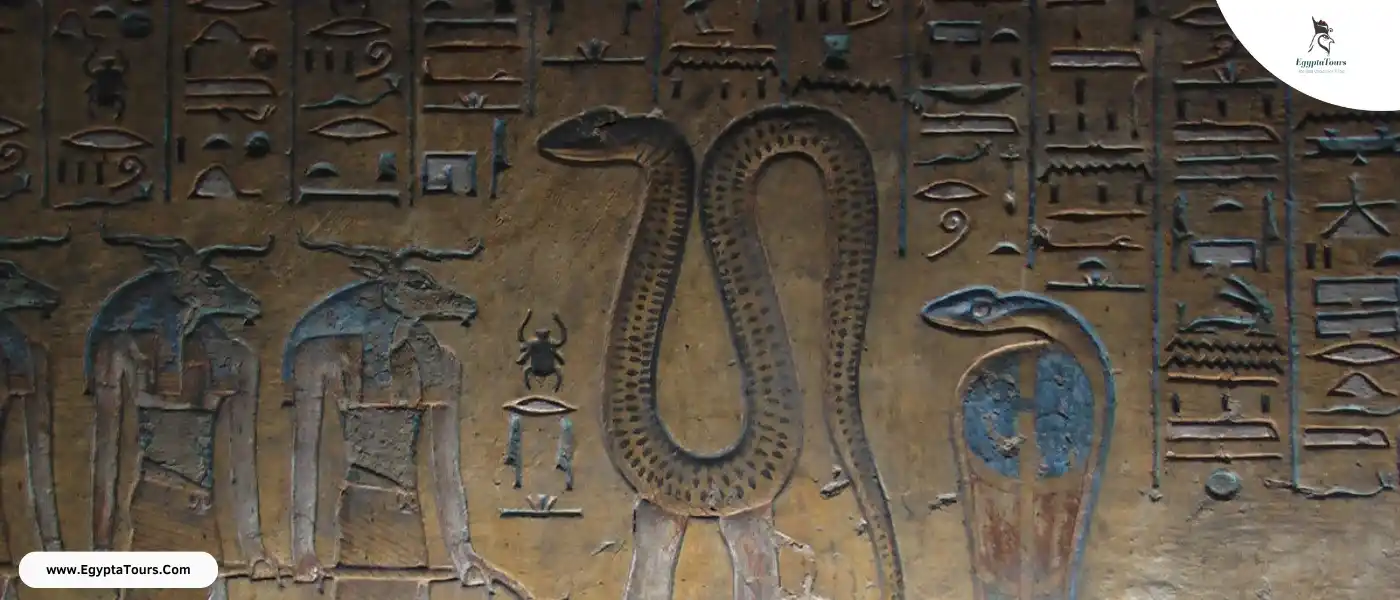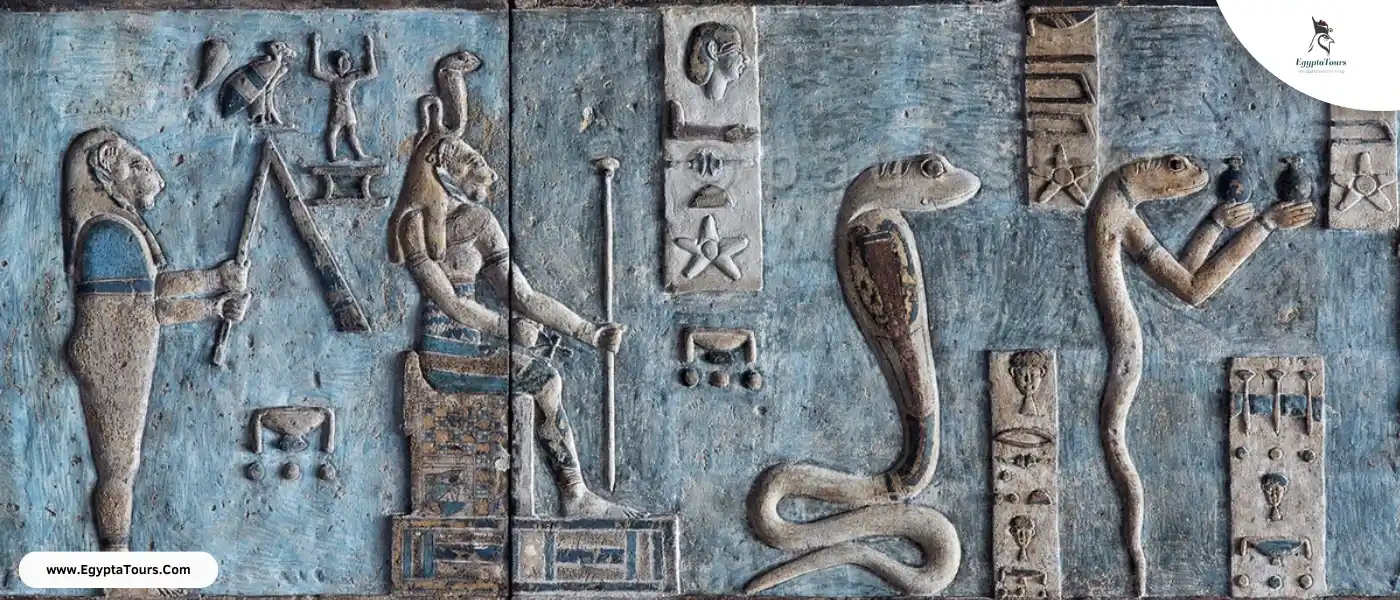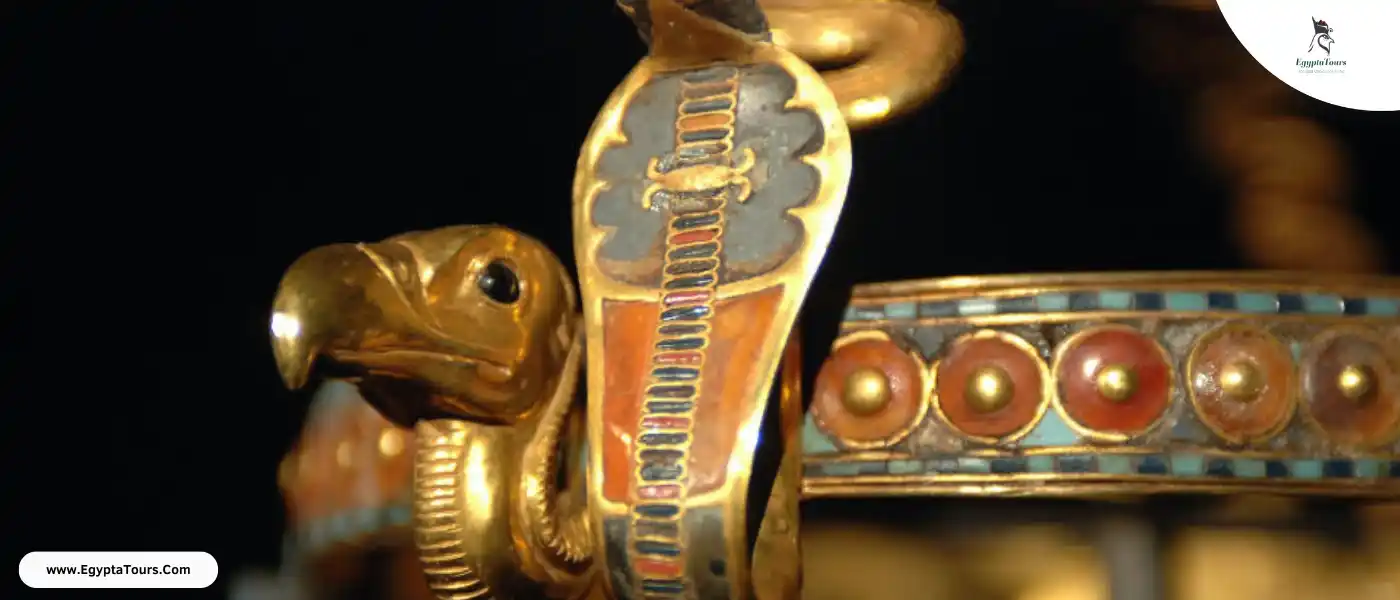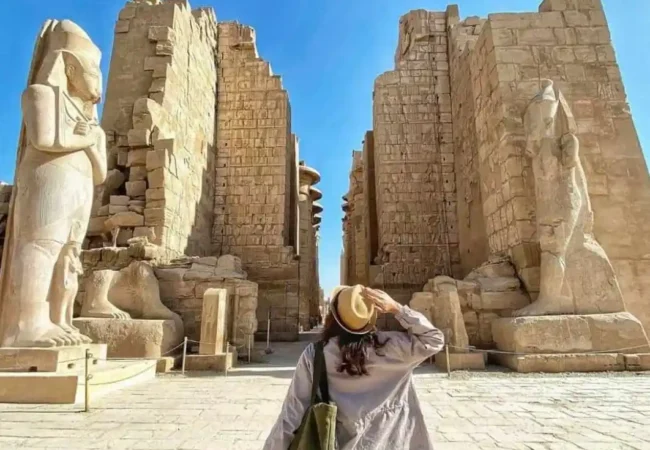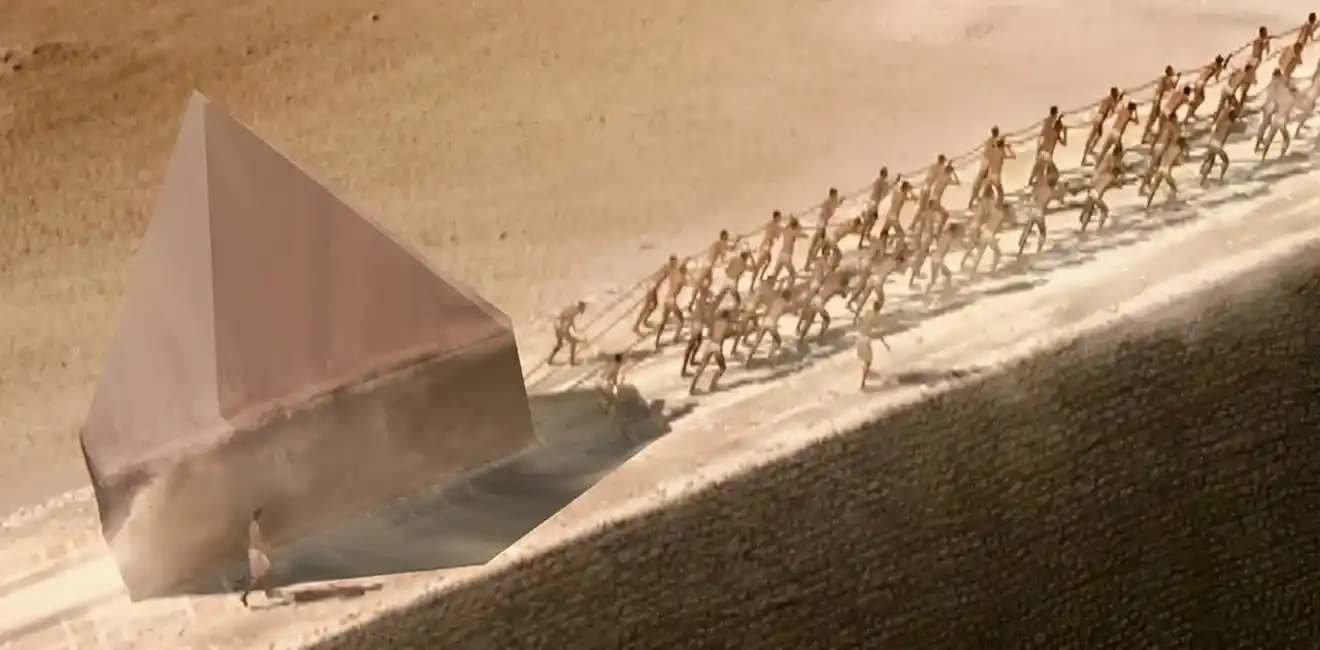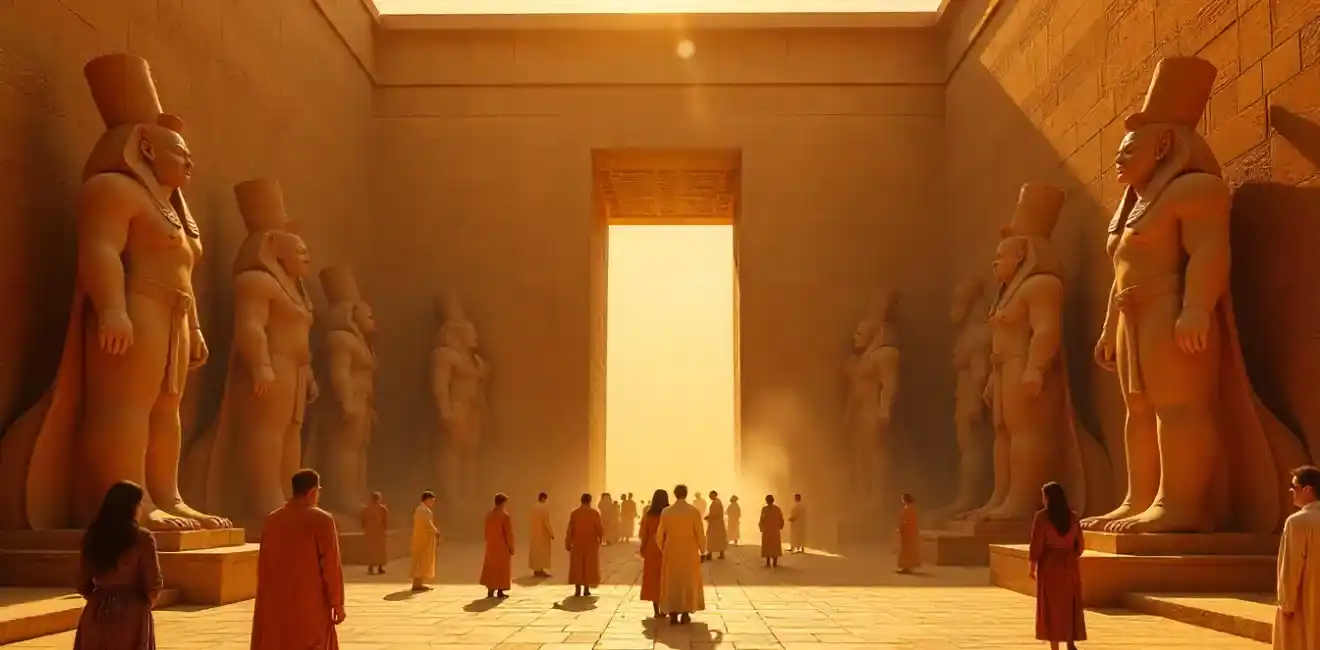
Snakes in ancient Egypt
Snakes in ancient Egypt were an extremely powerful and complex religious and cultural symbol.
These creatures played an important and pivotal role in ancient Egyptian religious beliefs and myths.
They represented a contradictory mix of power, protection and royal legitimacy on one hand and chaos, destruction and imminent danger on the other. Snakes were an essential and integral part of the ancient Egyptians’ religious, funerary and magical rituals.
They were known for their close association with various gods and the ruling Pharaoh which made them an important and fundamental element in their understanding of the world and the surrounding universe.
Snakes were a composite and complex symbol in ancient Egyptian myths and religious beliefs.
They represented protection and divine and royal authority on one hand and also represented evil, chaos and darkness on the other.
The most famous positive symbol for them is the “Uraeus,” the rearing cobra serpent which was depicted on the front of the royal crown’s headdress as a symbol of the Pharaoh’s protection and an embodiment of the goddess “Wadjet,” the protector of Lower Egypt.
On the other hand, “Apep” or ‘Abeb’ represented the giant cosmic serpent which symbolizes the forces of evil, chaos and nothingness in the myth of “Ra’s nightly journey” through the underworld.
Snakes were also associated with magic and medicine, as the ancient Egyptians believed that some types of their venom contained effective healing or magical powers.
They were used as part of religious and healing rituals and symbolized renewal, transformation and immortality due to their ability to shed their skin.
Religious beliefs associated with snakes in ancient Egypt
Snakes in ancient Egypt were considered sacred creatures which carried deep and multifaceted religious symbolism, varying between powers of protection, sovereignty, destruction and chaos.
They were associated with many beliefs and myths that formed an important part of their understanding of the universe, the gods and the cosmic order according to their beliefs.
For example, snakes represented The “Uraeus,” the cobra serpent, primarily symbolized the goddess “Wadjet,” the protector of the Delta.
It was depicted on the royal crown’s headdress as a clear sign of divine protection for the Pharaoh and for all of Egypt.
The Egyptians firmly believed that “Apep” was a huge and immortal serpent which symbolized the forces of evil, chaos and utter darkness that tried every night to stop and destroy the sun boat and its journey through the underworld and the sky.
This reflects the eternal and continuous struggle between cosmic order (Ma’at) and chaos (Isfet).
Snakes were also considered powerful symbols of transformation, renewal and immortality.
They believed that the snake’s ability to shed its skin symbolized rebirth and renewal and that snake venom sometimes contained magical and healing powers. Their symbols or parts were used in various medical and religious rituals.
The snake in hieroglyphics
In Egyptian hieroglyphic writing, the symbol of snakes in ancient Egypt was a powerful symbol which has multiple meanings and uses.
The “Uraeus” symbol, the rearing cobra serpent, represents protection and royal and divine authority and is associated with the goddess “Wadjet” who protects the Pharaoh and Lower Egypt.
In contrast, the name of the god “Apep” was sometimes written in the form of a cut or bound serpent, representing the serpent which symbolizes evil, chaos and danger. He was the arch-enemy of the god Ra in the myth of the sun’s journey.
Snakes in hieroglyphics could also represent concepts such as transformation, immortality and eternity, as they were believed to carry the symbolism of biological and spiritual renewal.
Famous snakes in ancient Egypt
Snakes in ancient Egypt were a powerful symbol which carried multiple and sometimes contradictory meanings ranging from protection, sovereignty, destruction and chaos.
They are considered an essential and integral part of complex myths and religious rituals.
Among the most famous snakes and associated deities linked to gods and mythological tales, we find:
- Uraeus: The rearing cobra serpent which represented royal protection and divine power and primarily symbolized the goddess “Wadjet.” It is usually depicted on the Pharaoh’s forehead and the royal crown’s headdress.
- Apep: A giant cosmic serpent which represents the forces of evil, chaos and darkness in Egyptian mythology. It was believed to try daily to swallow or destroy the sun bark and the symbol of cosmic order.
- Wadjet: This is the name given to the sacred cobra goddess who was believed to protect Lower Egypt and the Pharaoh. She is considered an important symbol of divine authority and sovereignty over the land.
What role did snakes play in ancient Egyptian culture?
Snakes played an extremely important symbolic and religious role in ancient Egyptian culture.
On one hand, they represented power, protection and royal legitimacy, like “Wadjet,” the cobra goddess who protects the Pharaoh and Egypt.
On the other hand, they represented evil, chaos and imminent danger, as in the myth of “Apep,” who obstructs the sun’s journey and threatens the cosmic order.
The Egyptians used snake symbols and amulets in religious and magical rituals to ward off evil and protect against enemies. They believed that some types of their venom had healing or magical properties.
How were snakes depicted in ancient Egyptian art?
Snakes were depicted in ancient Egyptian art which is widespread in temples, tombs and papyri, using various artistic styles.
They were often depicted simply and relatively realistically, either lying on the ground, intertwined in a spiral, or rearing up.
The “Uraeus” serpent (cobra) was depicted iconically and distinctively on the front of the royal crown’s headdress, as a symbol of authority and divine protection for the Pharaoh.
As for “Apep,” who represents the forces of evil and chaos, he was depicted as a giant serpent being stabbed or bound by the gods or the Pharaoh, illustrating that he poses a constant threat to the sun’s journey and the cosmic order.
What are the most interesting facts about snakes?
One interesting fact is that some types of snakes in ancient Egypt were possibly used in traditional medicine and magic to treat wounds or diseases, as it was believed that some components of their venom held healing or protective properties.
Also, snakes are capable of periodically renewing their skin which links them to the symbol of renewal, transformation and immortality in ancient Egyptian culture.
Additionally, snakes are among the most successful living creatures in adaptation, possessing amazing abilities to adapt remarkably to various different environments.
What are the strangest abilities snakes possess?
One of the amazing and strange abilities of some snake species is their capacity to “sense” and locate warm-blooded prey using a highly developed thermal sense in the facial region.
They can detect the slightest changes in the prey’s body heat from long distances, even in complete darkness.
Also, some snakes, like various “sea snakes” and “vipers,” are capable of injecting potent and complex venom that can kill or paralyze their prey within a few short minutes.
How were snakes viewed in ancient Egyptian mythology?
In the rich and complex Egyptian mythology, snakes were considered dual and sometimes contradictory symbols: on one hand, representing protection, authority and legitimacy like the “Uraeus,” which the Pharaoh wore as a symbol of protection and divine power derived from the gods.
On the other hand, “Apep,” the serpent of chaos and darkness, represented the forces of evil and nothingness that try to stop and destroy the sun bark and its eternal journey across the sky and the underworld, reflecting the eternal and continuous struggle between the forces of order Ma’at and Isfet.
Were snakes worshipped in ancient Egypt?
Yes, some types of snakes or deities taking their form were worshipped directly or indirectly in ancient Egypt, especially those representing protective goddesses like “Wadjet” and “Meretseger,” the lady of the Theban necropolis.
In these cases, the serpent represented a sacred divine power and played an important role in religious rituals as a symbol of protection, divine sovereignty and royalty.
Some local cults or Pharaonic religions worshipped snakes as direct manifestations of the protective goddess who guards the land, the Pharaohs and the inhabitants of a specific region.
How did the ancient Egyptians view snakebites?
Venomous snake bites were considered a real and great danger in ancient Egypt due to their prevalence in agricultural and desert environments.
It was generally believed that snakebites carried negative and deadly powers.
However, they were also considered in some spiritual contexts as a test of strength and endurance, as some people might have seen them as part of religious or magical rituals related to purification and spiritual transformation.
Conversely, there was a firm belief that some types of venoms or parts of snakes were used in making antidotes and treating certain diseases or in magical rituals for protection or harm.
Where can you see Pharaonic snake statues and murals?
You can see statues, murals and drawings of Pharaonic snakes frequently in ancient Egyptian temples and tombs scattered throughout the country, such as the Karnak Temple in Luxor, the Temple of Edfu and the tombs in the Valley of the Kings and Queens.
They can also be seen in international and Egyptian museums like the Egyptian Museum in Cairo and the National Museum of Egyptian Civilization.
There are many murals and reliefs that show the “Uraeus” on the front of headdresses and the royal crown and “Apep” appears in scenes of his violent conflict with the god Ra or other deities in some funerary and religious reliefs.
What is the relationship between snakes and healing in ancient Egyptian medicine?
The ancient Egyptians sometimes believed that some types of snake venom possessed effective healing or magical properties.
They possibly used extracts from snake venom in some ancient medical recipes and treatments, where it was thought to have strong positive or negative effects on the body.
Also, the skin and some other parts of the snake were sometimes used in preparing certain types of natural medicines, remedies and protective amulets. It was also believed that snakes, due to their ability to shed their skin, represented spiritual healing, renewal and transformation.
Therefore, they had a strong and symbolic relationship with medicine, magic and eternal life in ancient Egypt.
Snakes in ancient Egypt are a deep and complex cultural and religious symbol which reflects the Egyptians’ understanding of the balance of powers between protection, order, destruction and chaos.
Through their close association with the gods and the Pharaoh, these symbols greatly influenced the religious beliefs and magical and funerary rituals that formed an important part of the daily and spiritual life of the ancient Egyptians.
FAQs
What do snakes symbolize in ancient Egypt?
Snakes in ancient Egypt primarily symbolize contradictory concepts such as power and protection, like the “Uraeus” which symbolizes royal authority and the Pharaoh’s protection and also chaos, evil and danger, as in “Apep,” who represents the threat to the sun’s journey and cosmic order.
Why did Egyptians mummify snakes?
Egyptians mummified some types of sacred snakes as part of religious or magical rituals.
They perhaps believed that preserving the snake’s body completely helped maintain its protective power and symbolism, or to offer it as a sacrifice to the goddess. Also possibly as part of healing and spiritual rituals.
What is the Egyptian snake monster?
The most famous and largest Egyptian serpent monster is “Apep,” a giant cosmic serpent which symbolizes the forces of evil, chaos and darkness.
It was believed to try every night to stop or swallow the sun bark in the sky or the underworld and posed a continuous threat to divine power and cosmic order.
Who is the Egyptian queen of snakes?
The most famous Egyptian snake queen associated with rule is “Wadjet,” the cobra goddess, protector of Lower Egypt and protection, who was considered the guardian of the Pharaoh and Egypt.
She was often depicted on the royal crown’s headdress as a symbol of authority, divine power and royal legitimacy.







